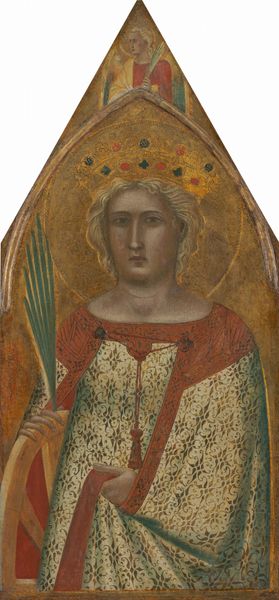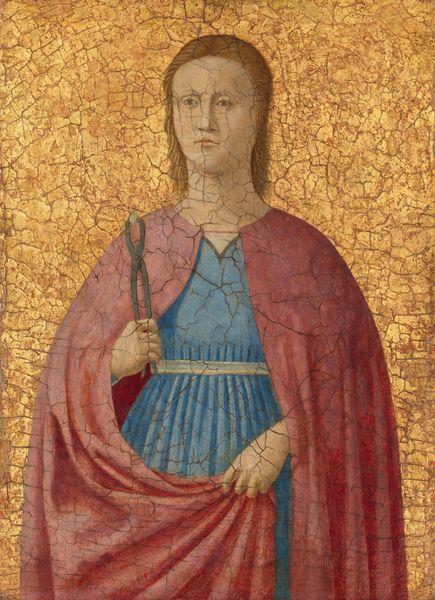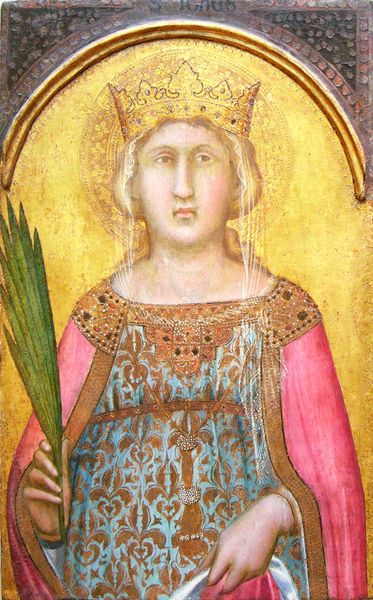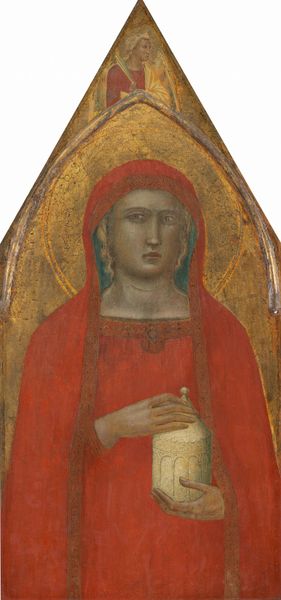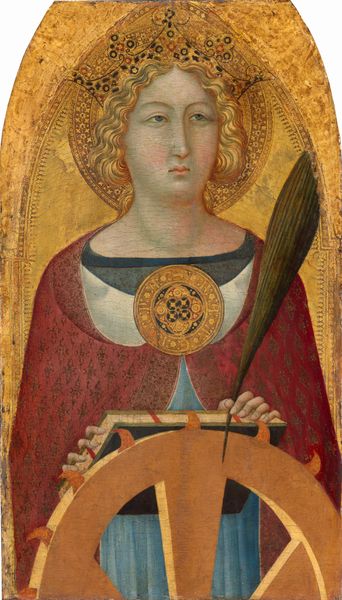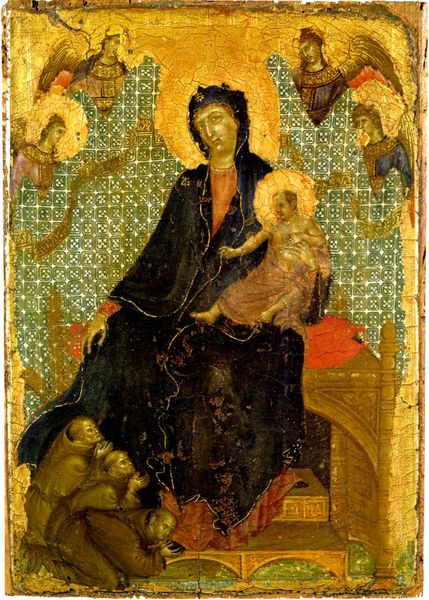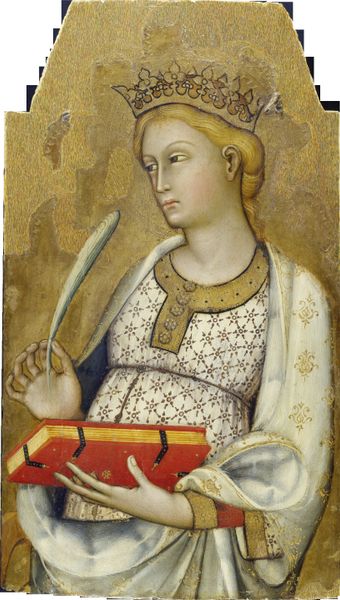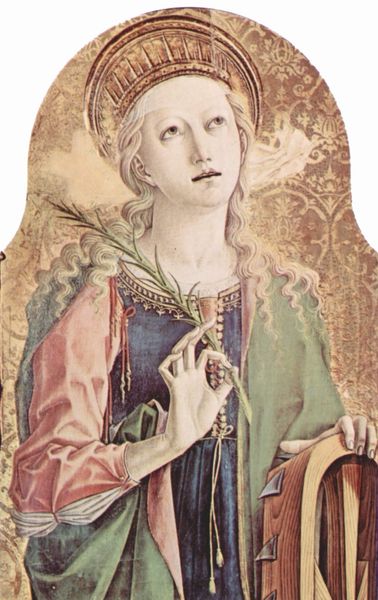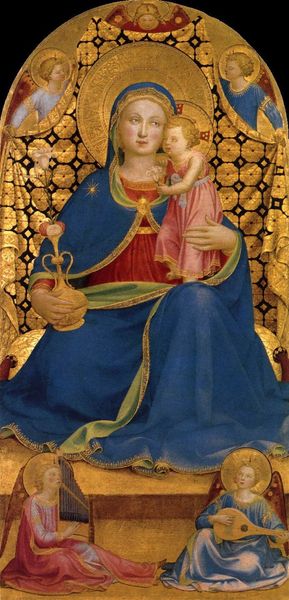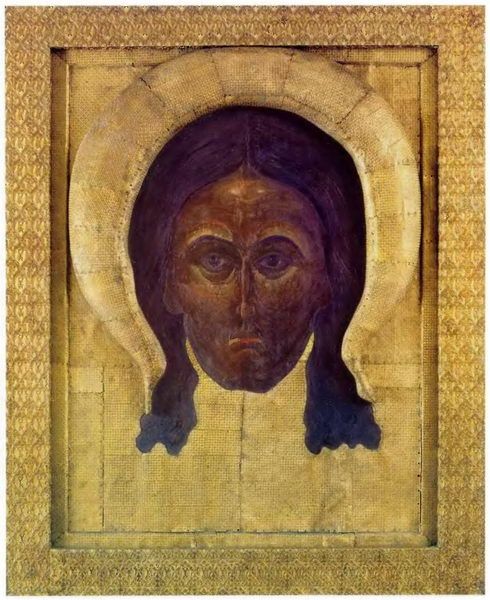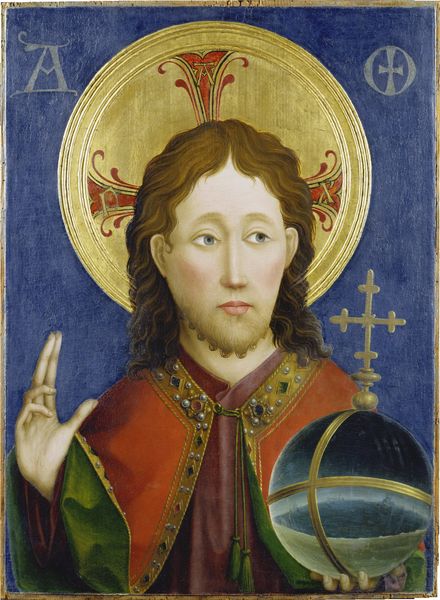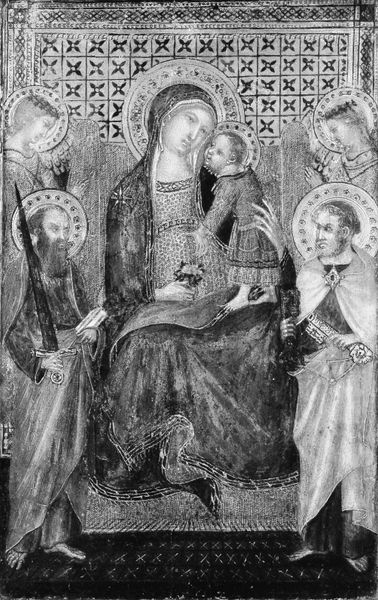
tempera, painting
#
portrait
#
tempera
#
painting
#
prophet
#
figuration
#
oil painting
#
history-painting
#
italian-renaissance
#
early-renaissance
#
fine art portrait
Copyright: Public domain
Luca di Tommè painted this panel of St. Michael sometime in the second half of the 14th century. The panel’s structure is immediately striking: a flattened, frontal composition, with a clear emphasis on symmetry and a limited spatial depth. Notice the colour. The gold that dominates, isn’t merely decorative, but establishes a symbolic field, turning St Michael into an otherworldly figure. The lines are precise, defining the contours of the figure with clarity and contributing to the iconic, almost geometric representation. The effect is one of stylized authority. It is an aesthetic rooted in the symbolic language of medieval art. Luca di Tommè creates a system of signs designed to be deciphered within the cultural codes of the period. The careful arrangement of colours and lines isn't just about aesthetic appeal; it's a structured means of conveying spiritual meaning. Ultimately, this artwork prompts us to consider how cultural values are encoded in visual forms and how artistic choices reflect broader intellectual currents.
Comments
No comments
Be the first to comment and join the conversation on the ultimate creative platform.
